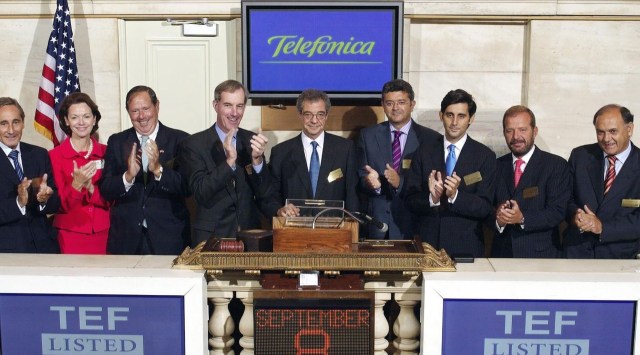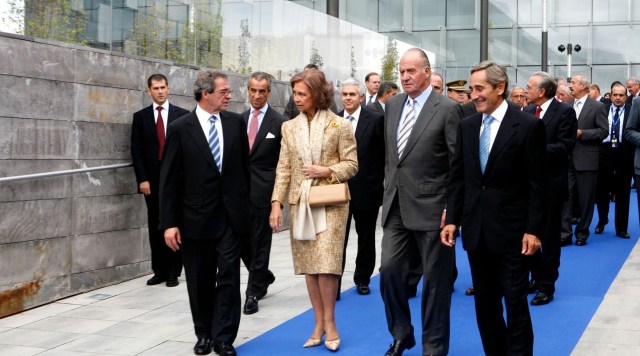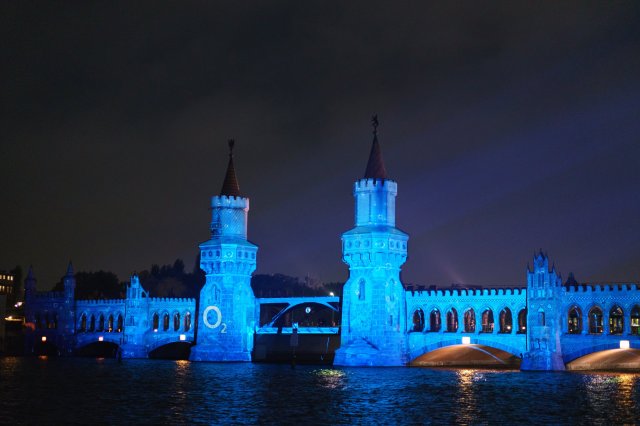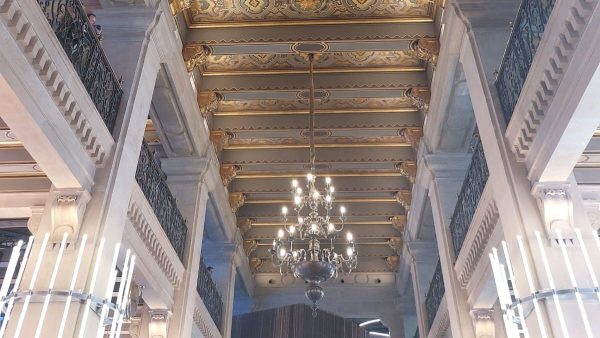The 2000s were marked by the economic crisis of 2008, the worst since the Great Depression of 1929. At the European level, 2002 saw the introduction of the euro and 2004 saw the biggest enlargement in the history of the EU.
This decade also saw the arrival of social networks, whose use and popularisation have forever changed the way we relate and communicate with each other.
2000: a new change in the presidency: César Alierta arrives
The year of the arrival of a new president, César Alierta, was marked by two major milestones: one international and the other national.
The first was ‘Operation Verónica’, which brought together mobile operations in Latin America (except Chile and Puerto Rico).
The second had to do with the liberalisation of the service in Spain, as in this year the competition started to offer local telephone calls. In addition, an Internet flat rate for 2,750 pesetas also began to be marketed.
2001: South America’s largest mobile operator is born
With the popularisation of ADSL, a new network was needed to accommodate this service and what was to come. Thus, in 2001, the RIMA network was born, an ambitious and pioneering project among the world’s large telcos.
In addition, there was a major new financial transaction. As our centenary website reports, “Telefónica and Portugal Telecom reached an important agreement in 2001. On the one hand, it involves the increase of Telefónica’s stake in the Portuguese operator to 10%, and the increase of the latter in the capital of the Spanish operator to 1.5%. And it means the creation of the leading operator in Latin America, with 9.3 million customers and valued at 1.7 billion pesetas”.
2002: MMS arrives: picture messages!
With the eyes of 2024 it may not be so striking, but in 2002 MMS arrived, a type of messaging enriched with multimedia (sounds, photos, videos). Movistar gave the option of sending them to landline, mobile or email.
On the other hand, internationalisation continued to advance and with the acquisition of 65% of Pegaso, Telefónica became the second operator in Mexico.
2003: Vivo and Imagenio were born
Two years after the agreement with PT, Vivo became a reality. A brand that was born to become the largest mobile operator in Brazil.
On the other hand, in Spain, the first million ADSL lines were reached in a year in which Imagenio, the IPTV solution, was also born. The combination of ADSL and IPTV was exported to the rest of the countries where the company operated, allowing it to get ahead in many of its markets.
Telefónica’s commitment to sport has always gone beyond mere sponsorship, as “it defines us as a company and has a lot to do with our values of self-improvement and commitment”. In 2003, the world of motorcycling brought great joy to the company: Dani Pedrosa was world champion in 125 cc; Toni Elías, third in 250 cc. and Sete Gibernau, runner-up in MotoGP.
2004: we became the first mobile phone operator in Latin America
After closing an agreement with the North American operator Bellsouth, Telefónica became the first mobile telephony operator in Latin America in 2004.
That same year saw the birth of Telefónica’s International Volunteers’ Day, an event with activities and workshops that is a source of union and pride for all ‘telefónicos’ on an intense day of solidarity.
2005: we opened the New York Stock Exchange
On the morning of 8 September 2005, a Telefónica delegation led by the then Chairman, César Alierta, opened the stock market session of the New York Stock Exchange through the well-known “Opening Bell”.
Movistar was consolidated as the commercial brand in 13 Spanish-speaking countries: Spain, Mexico, Argentina, Chile, Venezuela, Colombia, Peru, Ecuador, Panama, Guatemala, El Salvador, Uruguay and Nicaragua. In the same year, the brand and logo were revamped, with the M becoming a more dynamic element.
International progress in 2005 included two new milestones: the purchase of 51.1% of Cesky Telecom in the Czech Republic and the acquisition of 2.99% of China Netcom (a percentage that was later increased to 5%).
2006: Telefónica buys O2, the biggest deal by a Spanish company abroad
With the largest operation by a Spanish company abroad, Telefónica acquired O2 and went on to also operate in Germany, Ireland and the United Kingdom. The year also saw the start of operations in Slovakia under the O2 brand.
With the purchase of 51.1% of the fixed telephony operator Colombia Telecom, Telefónica now manages more than 200 million customers worldwide with operations in 23 different countries.
2007: Bringing the first iPhone to Europe
Thanks to an agreement with Apple, O2 became the first operator to market the new iPhone mobile phone in Europe, specifically in the UK. The following year, Telefónica was the exclusive partner for distribution in Spain, with endless queues for its purchase in the summer of 2008, as we will see in the section corresponding to that year.
2008: we moved to Distrito Telefónica
In 2008, Distrito Telefónica (then Distrito C) was inaugurated: a new corporate headquarters on a 168,000 m2 plot of land comprising a complex of 15 buildings with glass facades and large green areas.
At the time, it was also the largest covered solar park in Europe and one of the largest in the world: 16,000 photovoltaic solar panels generating 10% of the complex’s annual consumption.
With the freeing up of space due to the transfer of employees to Distrito Telefónica, Gran Vía 28 underwent a major change. Telefónica’s flagship shop was born, with 3,000 m2 dedicated to technology and offering the best experiences to users.
The inauguration of the shop took place with the commercialisation of the iPhone and caused long queues along Gran Vía until reaching Plaza de España.
On another note, 2008 also brought us the news that Proniño, the company’s main social action project managed by Fundación Telefónica, reached 100,000 beneficiaries. A programme focused on eradicating child labour through the education of children and young people.
2009: telepresence arrives
Remote meetings as if they were real were a novelty in 2009 in the countries where the company was present with the telepresence system: “Very high quality, audio and video systems, with no delays in the image or sound, as well as collaboration tools to enrich the meeting, made it possible to have a virtual meeting as naturally as if it were a face-to-face meeting”.
2000s images





Telefónica Centenary
Don’t miss all the information on the history of Telefónica on our centenary website, https:///www.telefonica100.com/en.
You can also take a closer look at the series by decade that we are publishing on our blog. Don’t miss what happened in the previous decade, the 1990s.












